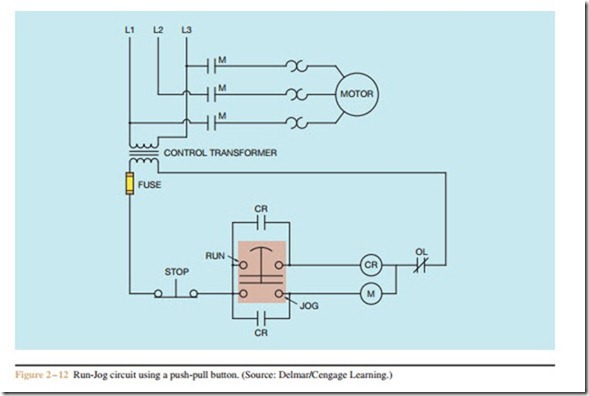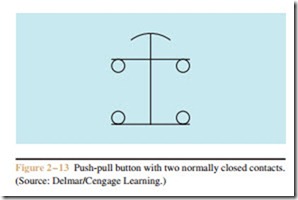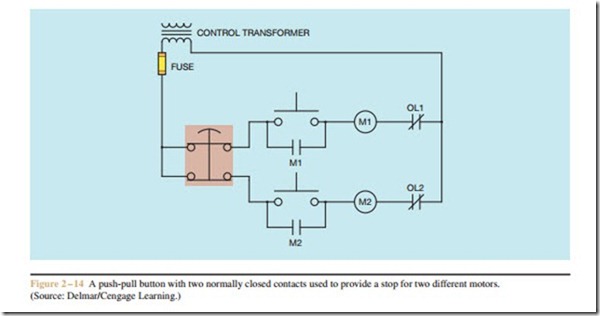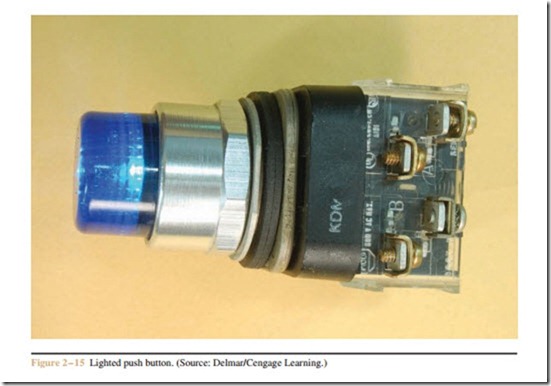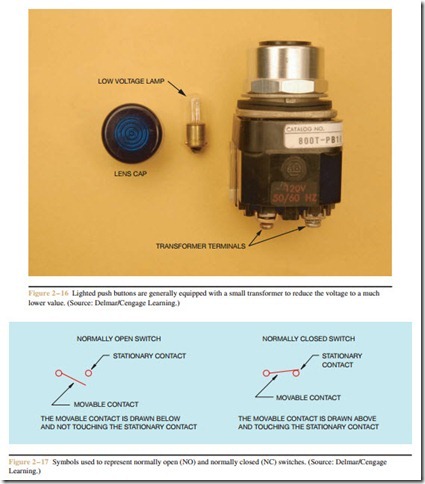Basic Schematics
To understand the operation of the circuit shown in Figure 2 – 20, you must understand some basic rules concerning schematic, or ladder, diagrams:
1. Schematic, or ladder, diagrams show components in their electrical sequence without regard for physical location. In Figure 2 – 20, a coil is labeled CR and one normally open and one normally closed contact
. When a coil energizes, all contacts controlled by it change position. Any normally open contacts will close, and any normally closed contacts will open. When the coil is de-energized, the contacts will return to their normal state.
are labeled CR. All of these components are physically located on control relay CR.
2. Schematics are always drawn to show components in their de-energized, or off, state.
3. Any contact that has the same label or number as a coil is controlled by that coil. In this example, both CR contacts are controlled by CR coil.
Referring to Figure 2 – 20, if the water level should drop far enough, the float switch will close and complete a circuit through the normally closed contact to the buzzer and to the warning light connected in parallel with the buzzer. At this time, both the buzzer and warning light are turned on. If the silence push button is pressed, coil CR will energize and both CR contacts will change position. The normally closed contact will open and turn off the buzzer. The warning light, however, will remain on as long as the low water level exists. The normally open CR contact connected in parallel with the silence push button will close. This contact is generally referred to as a holding, sealing, or maintaining contact. Its function is to maintain a current path to the coil when the push but- ton returns to its normal open position. The circuit
will remain in this state until the water level becomes high enough to reopen the float switch. When the float switch opens, the warning light and CR coil will turn off. The circuit is now back in it original de- energized state.
